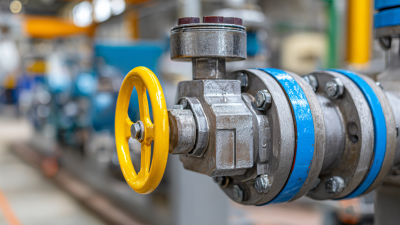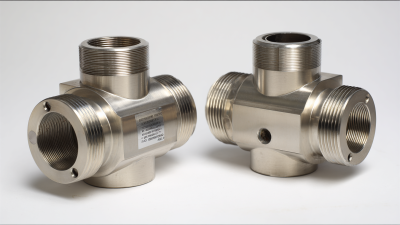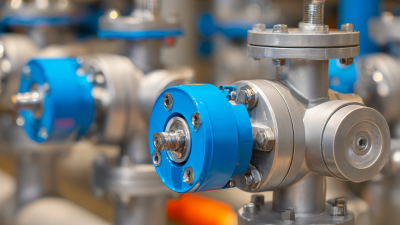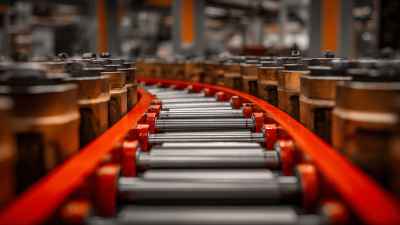
When it comes to selecting the right valve for your next project, the wafer butterfly valve emerges as a standout choice for a multitude of reasons. This compact yet powerful valve design offers exceptional benefits that cater to various industries and applications. Its unique construction not only provides remarkable flow control but also contributes to efficient space management in piping systems.

In this blog, we will explore seven compelling reasons why the wafer butterfly valve is the ultimate choice for your upcoming ventures, from its cost-effectiveness and ease of installation to its versatility and reliability. By understanding these advantages, you can make an informed decision that elevates the performance and efficiency of your projects while ensuring long-term sustainability.
Whether you're working on a large-scale industrial endeavor or a smaller application, the wafer butterfly valve is sure to meet your needs with excellence.
Wafer butterfly valves are increasingly recognized as the leading choice for fluid control applications, and with good reason. These valves offer a compact design, making them ideal for installations with limited space. Their lightweight construction facilitates easy installation and maintenance, which can significantly reduce project downtime and labor costs. According to recent market reports, the butterfly valve segment is poised for substantial growth, particularly in the Asia Pacific region, where the market is expected to reach USD 21.06 billion by 2033. This growth is driven by the rising demand for high-efficiency solutions in various industries.

The efficiency of wafer butterfly valves is further underscored by advancements in design and materials. For example, recent innovations in valve technology have led to the introduction of high-performance options that excel in demanding industrial flow control applications. These advancements ensure reliable operation under high pressure and temperature conditions, enhancing overall process efficiency. The increasing recognition of the importance of safe and energy-efficient flow control technologies makes wafer butterfly valves an optimal choice for modern projects, ensuring the seamless management of liquid and gas flows across various sectors.
When it comes to choosing the right valve for industrial applications, the comparative performance of wafer butterfly valves sets them apart from other valve types. According to a report by MarketsandMarkets, the global butterfly valve market is projected to grow significantly, primarily due to their efficiency and reliability in flow control. Wafer butterfly valves, in particular, offer a lightweight design that facilitates easier installation and maintenance, which can lead to reduced downtime in operations. Their compact structure also means they take up less space, making them ideal for projects with limited installation room.
In contrast, other valve types such as gate or globe valves may offer good flow characteristics but generally come with higher installation and maintenance costs. The American Valve Manufacturers Association reports that butterfly valves possess a lower pressure drop compared to gate valves, translating into energy savings over time. Furthermore, they typically handle a wide range of media types, including slurries and viscous fluids, showcasing their versatility. This combination of operational efficiency, cost-effectiveness, and adaptability makes wafer butterfly valves a supreme choice for your next engineering project.
| Valve Type | Weight (kg) | Space Required (m2) | Flow Coefficient (Cv) | Cost Efficiency ($) | Maintenance Ease (1-5) |
|---|---|---|---|---|---|
| Wafer Butterfly Valve | 5.4 | 0.08 | 120 | 150 | 4 |
| Gate Valve | 10.2 | 0.15 | 90 | 200 | 3 |
| Ball Valve | 8.0 | 0.12 | 100 | 180 | 5 |
| Check Valve | 7.5 | 0.10 | 70 | 160 | 4 |
When considering cost-effectiveness in project design, wafer butterfly valves stand out as a superior choice. These valves not only require less material to manufacture, thanks to their compact design, but they are also generally lighter than traditional valve options. According to industry reports, the material savings can account for up to 30%, which translates to significant cost reductions during procurement. Additionally, the ease of installation and low maintenance requirements further enhance their long-term savings potential, with estimates indicating a 20% reduction in overall operational costs.
Tip: Opt for high-quality wafer butterfly valves from reputable manufacturers to ensure durability and reliability, which can prevent costly downtime or replacements in the future.
Moreover, wafer butterfly valves are known for their efficiency in flow control. Their streamlined design reduces pressure loss, allowing for more efficient system operation. Research from the Valve Manufacturers Association suggests that energy savings associated with these valves can reach 15% over traditional options. This not only helps lower utility costs, but also contributes to a more sustainable project overall.
Tip: Always assess the specific flow requirements of your application to select the most suitable size and type of wafer butterfly valve, maximizing both savings and performance.
 Wafer butterfly valves are gaining recognition in industrial settings, particularly due to their ease of installation and maintenance. These valves are designed to simplify operations, requiring less space and enabling quick installation, which is crucial in fast-paced manufacturing environments. In an era where efficiency is paramount, the integration of wafer butterfly valves can reduce downtime significantly, aligning perfectly with contemporary trends such as predictive maintenance powered by AI technologies.
Wafer butterfly valves are gaining recognition in industrial settings, particularly due to their ease of installation and maintenance. These valves are designed to simplify operations, requiring less space and enabling quick installation, which is crucial in fast-paced manufacturing environments. In an era where efficiency is paramount, the integration of wafer butterfly valves can reduce downtime significantly, aligning perfectly with contemporary trends such as predictive maintenance powered by AI technologies.
As industries increasingly adopt digital tools to enhance operational efficiency, the role of easy-to-maintain components like wafer butterfly valves cannot be overstated. Their straightforward design not only streamlines maintenance processes but also contributes to a reduction in the carbon footprint by minimizing resource consumption during upkeep. By using advanced alignment systems alongside these valves, manufacturers can ensure optimal performance and reliability, thereby embracing sustainability while simultaneously addressing ergonomic considerations. The combination of user-friendly components and smart technology evidences a commitment to both innovation and environmental stewardship in modern industrial practices.
In recent years, the use of wafer butterfly valves has significantly increased across various industries, showcasing their growing importance in modern fluid control systems. According to recent statistics, the global market for these valves is expected to expand at a compound annual growth rate (CAGR) of over 6% from 2023 to 2028. This surge is largely attributed to the valves' efficient design, cost-effectiveness, and ease of installation, making them the preferred choice for engineers and project managers.
Moreover, the energy and water sectors are leading the charge in adopting wafer butterfly valves, with companies increasingly recognizing their benefits in terms of space-saving and reduced weight compared to traditional gate or globe valves. Data from industry surveys indicates that over 60% of plant operators now favor wafer butterfly valves for their durability and low maintenance requirements. This trend is expected to continue, as sustainability practices push for more efficient systems, further solidifying wafer butterfly valves' place as a staple in contemporary industrial projects.
The chart above illustrates the usage percentages of wafer butterfly valves across various industries as of 2023. The data indicates significant adoption in water treatment and HVAC applications, showcasing the valves' versatility and efficiency in diverse project demands.





